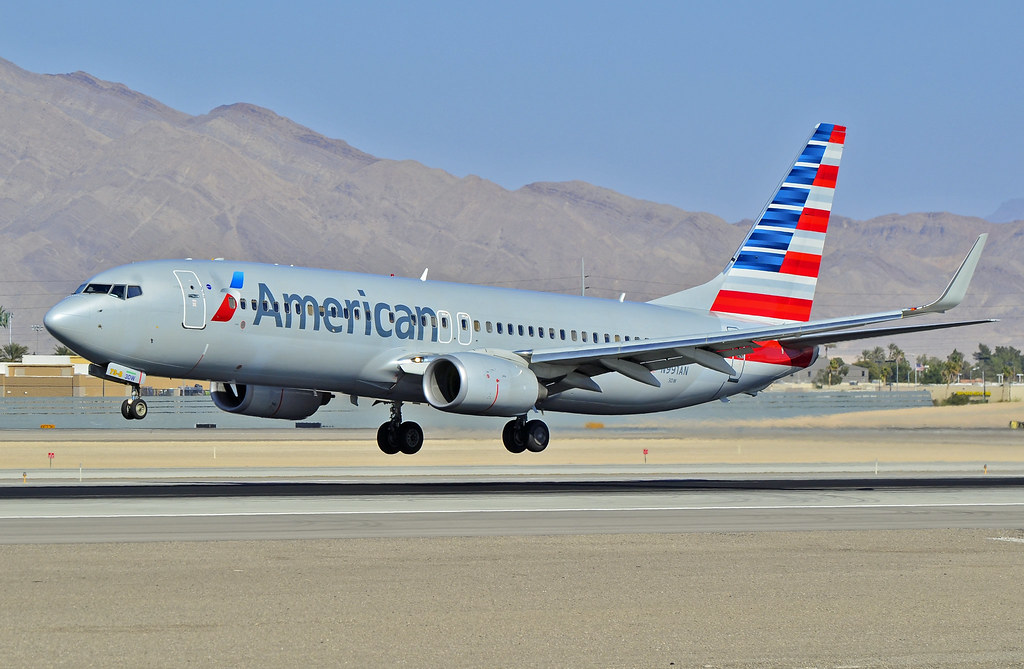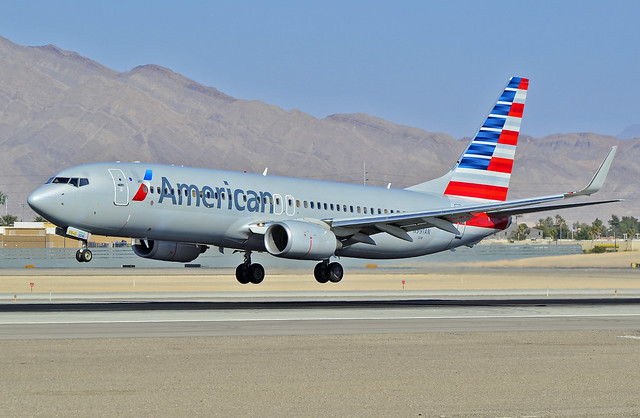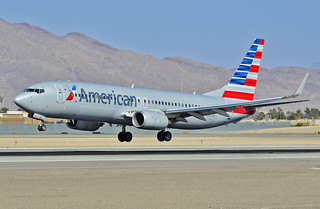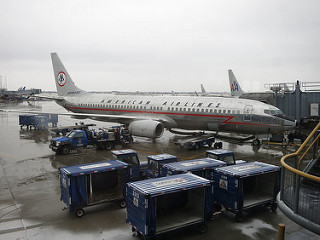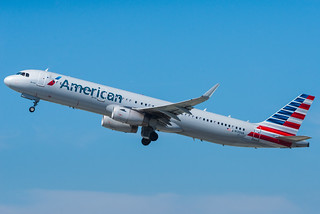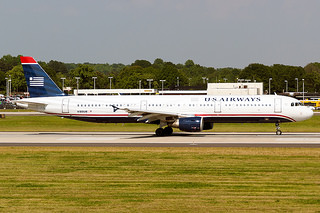American B738 at Dallas on Feb 10th 2024, overran runway on landing
Last Update: November 10, 2025 / 17:24:03 GMT/Zulu time
Incident Facts
Date of incident
Feb 10, 2024
Classification
Incident
Airline
American Airlines
Flight number
AA-1632
Departure
Washington National, United States
Destination
Dallas Ft. Worth, United States
Aircraft Registration
N991AN
Aircraft Type
Boeing 737-800
ICAO Type Designator
B738
Airport ICAO Code
KDFW
According to ADS-B data the aircraft touched down in the runway's touch down zone about 520 meters down the runway at 152 knots over ground and at 600 feet MSL (according to standard pressure, Dallas Ft. Worth runways' elevations are about 600 feet MSL) and began deceleration, the aircraft slowed through 132 knots over ground about 990 meters down the runway (at 600 feet MSL) and slowed through 90 knots about 1580 meters down the runway (at 600 feet MSL), only then the aircraft's transponder began to indicate the aircraft was on the ground. The aircraft slowed through 40 knots over ground about 2460 meters down the runway and about 110 meters before the runway end, crossed the runway end at 27 knots over ground and came to a stop about 23 meters past the runway end on the paved surface of the runway end safety area.
According to local witnesses three main tyres deflated.
The FAA reported the aircraft went into the runway end safety area after experiencing a braking malfunction. The FAA have opened an investigation.
On Mar 21st 2024 the NTSB released their preliminary report summarizing the sequence of events:
The first officer (FO) was the pilot flying and the captain was the pilot monitoring. In a postincident statement, the flight crew reported that an instrument landing system (ILS) approach to runway 17L was flown with the airplane configured with the flaps at 30° and the autobrakes selected to 3 due to a reported tailwind of one knot. They stated that the approach and touchdown were normal with no directional control issues noted. Shortly after touchdown, the flight crew observed the AUTOBRAKE DISARM light illuminate and the brakes did not engage requiring manual braking by applying pressure to the pedals while deploying the thrust reversers.
The flight crew stated that the airplane began to decelerate with the thrust reversers but at a slower pace. The FO indicated that the brakes were not working correctly. When approaching taxiway Q7, the ground speed was higher than expected and the captain stated, “my aircraft” and the FO responded, “your aircraft.” The FO called 60 knots and the captain noticed no decrease in ground speed. The captain indicated that he immediately moved both thrust reverser levers to their maximum reverse position. When the speed was about 40 to 50 knots and about 1,000 from the end of the runway the captain called DFW tower, “American 1632, total brake failure, we are departing the end of runway 17L, roll crash fire rescue.” Passing the runway threshold lights, the captain felt the airplane come to a stop a short time later.
...
Data from the digital flight data recorder (DFDR) was sent to the NTSB’s Vehicle Recorder Laboratory in Washington, DC, for analysis.A preliminary data review has been completed and a plot showing the braking parameters is shown in figure 2. Data showed that at touchdown the auto brake applied [Auto Brk Applied] parameter momentarily (less than 2 seconds) transitioned from “No Auto Brk” to “Auto Brk” and then back to “No Auto Brk” for the remainder of the landing rollout. The left and right brake pressure increased to their maximum pressure consistent with normal (manual) braking. Data also showed the engine 1 and 2 thrust reverser parameters [Eng1 and Eng2 TR Dply-DEU] transitioned from “stowed” to “deployed” about 8 seconds after touchdown. They remained deployed for about 12 seconds, were stowed for about 6 seconds, and then re-deployed for the remainder of the landing rollout.
The cockpit voice recorder (CVR) was removed from the airplane and sent to the NTSB’s Vehicle Recorder Laboratory in Washington, DC, for analysis.
...
Analysis of the ADS-B and DFDR data shows that the left and right main landing gear (MLG) touched down about 1,500 feet from the runway threshold and the nose landing gear came down just after 2,000 feet. Groundspeed on the initial touchdown was 150 knots and 140 knots for the nose. The aircraft departed the end of the runway surface at 30 kts.
...
Post-incident troubleshooting and inspection of the brake control system found the flexible hydraulic lines going to the number 3 (right inboard) and number 4 (right outboard) MLG brakes had been improperly re-connected after the carbon brake/flow limiter installation. The flexible hydraulic lines supplying pressure to the number 3 and 4 MLG brakes had been swapped at the connection with the flow limiters.
System troubleshooting also found a discrepancy with the wiring to the left MLG wheel speed transducers. During a wheel speed transducer operational test, maintenance found the wiring harness, located in the left MLG axle, had been installed incorrectly. The electrical connector for the number 1 (left outboard) and the number 2 (left inboard) wheel speed transducer were swapped.
ON Nov 10th 2025 the NTSB released their final report concluding the probable cause of the incident was:
Improper maintenance due to human error during a braking system modification diminished braking performance. Contributing to the diminished braking performance was the lack of a functional check to verify the flexible hydraulic hoses and transducer wiring were connected correctly after the braking system modification.
Metars:
KDFW 110353Z 04005KT 10SM OVC013 12/10 A2985 RMK AO2 SLP105 T01220100=
KDFW 110253Z 06009KT 10SM OVC014 12/10 A2983 RMK AO2 SLP100 T01220100 51006=
KDFW 110239Z 07007KT 10SM OVC014 12/10 A2983 RMK AO2 T01220100=
KDFW 110153Z 06008KT 10SM OVC015 12/10 A2983 RMK AO2 SLP099 T01220100=
KDFW 110104Z 06005KT 10SM OVC017 13/10 A2982 RMK AO2 T01280100=
KDFW 110053Z 06005KT 10SM SCT019 OVC040 13/10 A2982 RMK AO2 SLP095 T01280100=
KDFW 102353Z 09005KT 10SM SCT017 BKN040 BKN090 OVC250 13/10 A2982 RMK AO2 SLP093 60001 T01330100 10139 20117 53003=
KDFW 102253Z 09006KT 10SM FEW012 BKN045 BKN100 OVC250 14/10 A2980 RMK AO2 SLP087 T01390100=
KDFW 102153Z 09008KT 10SM FEW012 BKN043 BKN090 OVC250 14/10 A2981 RMK AO2 RAE2057 SLP090 P0000 T01390100=
KDFW 102053Z 10006KT 10SM -RA FEW012 SCT034 BKN049 BKN130 OVC250 13/11 A2981 RMK AO2 RAB38 SLP090 P0000 60001 T01330111 56022=
Aircraft Registration Data
Incident Facts
Date of incident
Feb 10, 2024
Classification
Incident
Airline
American Airlines
Flight number
AA-1632
Departure
Washington National, United States
Destination
Dallas Ft. Worth, United States
Aircraft Registration
N991AN
Aircraft Type
Boeing 737-800
ICAO Type Designator
B738
Airport ICAO Code
KDFW
This article is published under license from Avherald.com. © of text by Avherald.com.
Article source
You can read 2 more free articles without a subscription.
Subscribe now and continue reading without any limits!
Read unlimited articles and receive our daily update briefing. Gain better insights into what is happening in commercial aviation safety.
Send tip
Support AeroInside by sending a small tip amount.
Related articles
American B738 at Boston on Mar 15th 2024, flaps problem
An American Airlines Boeing 737-800, registration N991AN performing flight AA-1442 from Dallas Ft. Worth,TX to Boston,MA (USA), was on final approach…
American B738 near Las Vegas on Jan 25th 2013, instrument failure
An American Airlines Boeing 737-800, registration N991AN performing flight AA-460 from San Francisco,CA to Dallas Ft. Worth,TX (USA), was enroute at…
American B738 at Boston on Jun 7th 2012, runway incursion
An American Airlines Boeing 737-800, registration N991AN performing flight AA-349 from Boston,MA to Dallas Ft. Worth,TX (USA) with 144 passengers and…
American A319 at Dallas on Nov 20th 2025, hydraulic
An American Airlines Airbus A319-100, registration N803AW performing flight AA-1353 from Dallas Ft. Worth,TX to San Antonio,TX (USA) with 108 people…
American B738 near Belize on Nov 26th 2025, electrical problems, engine shut down in flight
An American Airlines Boeing 737-800, registration N951AA performing flight AA-327 from Miami,FL (USA) to San Salvador (El Salvador) with 177 people…
American A321 near Houston on Nov 23rd 2025, fumes on board
An American Airlines Airbus A321-200, registration N139AN performing flight AA-2118 from Orlando,FL to Phoenix,AZ (USA), was enroute at FL320 about…
American A321 near Raleigh/Durham on Jun 22nd 2025, turbulence injures 8
An American Airlines Airbus A321-200, registration N189UW performing flight AA-1286 from Miami,FL to Raleigh/Durham,NC (USA) with 181 passengers and…
American A321 at Los Angeles on Oct 14th 2025, toxic fumes on the aircraft
An American Airlines Airbus A321-200, registration N587UW performing flight AA-274 from Los Angeles,CA to New York JFK,NY (USA), was climbing out of…
Newest articles
India Express B738 at Ras al-Khaimah on Apr 22nd 2025, tail strike on landing
An Air India Express Boeing 737-800, registration VT-AXZ performing flight IX-331 from Khozikode (India) to Ras al-Khaimah (United Arab Emirates),…
Delta A321 near Kansas City on Jan 3rd 2026, engine shut down in flight
A Delta Airlines Airbus A321-200, registration N349DX performing flight DL-2883 from Denver,CO to Detroit,MI (USA) with 169 passengers and 6 crew,…
Subscribe today
Are you researching aviation incidents? Get access to AeroInside Insights, unlimited read access and receive the daily newsletter.
Pick your plan and subscribePartner

ELITE Simulation Solutions is a leading global provider of Flight Simulation Training Devices, IFR training software as well as flight controls and related services. Find out more.
SafetyScan Pro provides streamlined access to thousands of aviation accident reports. Tailored for your safety management efforts. Book your demo today
AeroInside Blog
Popular aircraft
Airbus A320Boeing 737-800
Boeing 737-800 MAX
Popular airlines
American AirlinesUnited
Delta
Air Canada
Lufthansa
British Airways
